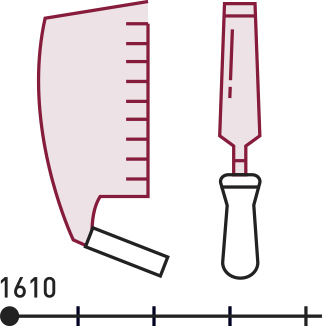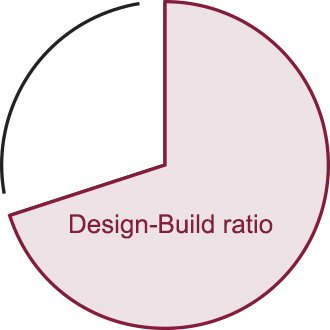TAKENAKA by numbers

Since its founding in 1610, Takenaka has adhered to a toryo (master builder) spirit.
Toward the end of Japan's Warring States period, Tobei-Masataka Takenaka was a construction magistrate in the service of the pre-eminent feudal lord of the time, Nobunaga Oda, who would perish in the Honnoji Incident just before completing national unification. In 1610, after spending years as a wandering samurai and exhausting all hope of restoring his master's household, our founder discarded his sword and set out on the path of a carpenter who would build shrines and temples. He became a master builder (toryo) and was the first in a long line of craftsmen who would dedicate themselves to producing the best possible architectural works for their customers.
The "Komuten" part of the company's Japanese name, which means "building contractor's shop," expressed a firm intention to combine our conviction about the original concept of architecture being to undertake "building construction" (komu) in an integrated design-build manner with "shop" (ten) to indicate that service to the customer was our first principle. Since that time, Takenaka Komuten has continually endeavored to put customer dreams first and turn them into reality.

There is a popular saying in Japan, "For rice cakes, go to a rice cake shop." In other words, "For the best results, go to a specialist."
Even though there is a viewpoint that separating design and construction will result in a good building, it has been gratifying for our company, which is so passionate about its Integrated Design-Build System, to have had many customers who have requested both design and construction together. At such times, we are very pleased by the opportunity to provide the merits of design-build to our customers.
The major advantages of the Integrated Design-Build System for customers are:
- Should a problem occur, such as a quality issue caused by the design or construction, single-point responsibility means that the problem can be resolved more quickly and effectively.
- Partially overlapping with the design process, construction can begin earlier, which also contributes to shortening the project period.
- Reflecting the technology we possess and feeding back the know-how accumulated during construction to the design process enables more rational construction and also shortens the project period.
- Results for 2024
(based on revenues from construction services)

Creating the best works through our Integrated Design-Build System requires talented human resources at every level. In Japan, a licensed first-class architect performs the roles of both architect and engineer. In addition to licensed first-class architects, the number of licensed first-class structural design architects (224 as of January 2025) and licensed first-class MEP design architects (83 as of January 2025) at our company is topmost in the industry. To maintain the highest standards of both design and engineering, we provide in-house training so that qualified people are able to improve their skills and proceed to national and private certifications.
- Numbers as of January 2025

The BCS Prize recognizes excellent architectural works in Japan based on site visits by the BCS selection committee, and the BELCA Prize recognizes the parties involved in superior maintenance over time and refurbishment of existing buildings. The number of these awards received by Takenaka is the highest in the industry. In addition, the number of awards received by Takenaka from the Architectural Institute of Japan's works selection, and the Society of Heating, Air-Conditioning and Sanitary Engineers of Japan's award system (a total of 36 technology awards and 54 promotion awards, respectively, up to 2024) is also the highest in the industry.
- 1 BCS Prizes (up to 2024):
241 for construction (including for joint ventures), of which 126 are design & construction - 2 BELCA Prizes (up to 2024):
82 for construction, of which 41 are design & construction (including design only)
